
GAMBLE SANDS
Brewster, WA
Gamble Sands can best be summed up in a very simple word: FUN. Good ole fashion fun that is what golf was meant to be. We all lost our way in the greatest game for a while. But it sure is good to be back, thanks to those that made a giant sand wasteland in the heart of the plains of Eastern Washington into a must-play destination. It’s a solid 4 hour drive for us on the westside around Seattle and Tacoma. But we are now making weekend trips out there regularly, because Gamble Sands simply offers a good time, every time. The golf is excellent, unique, challenging, yet approachable. It is very score-able for even the novice player, yet provides an excellent challenge for pros. The views and weather are exceptional. The food and stay are top notch. It is very family-friendly. And the staff have become family. We had the opportunity to hear the Gamble Sands story from Tory Wulf, part of the family who made Gamble happen, and also the project manager for the entire golf project.
Read the full interview below the gallery.
On assignment for TRUE linkswear.






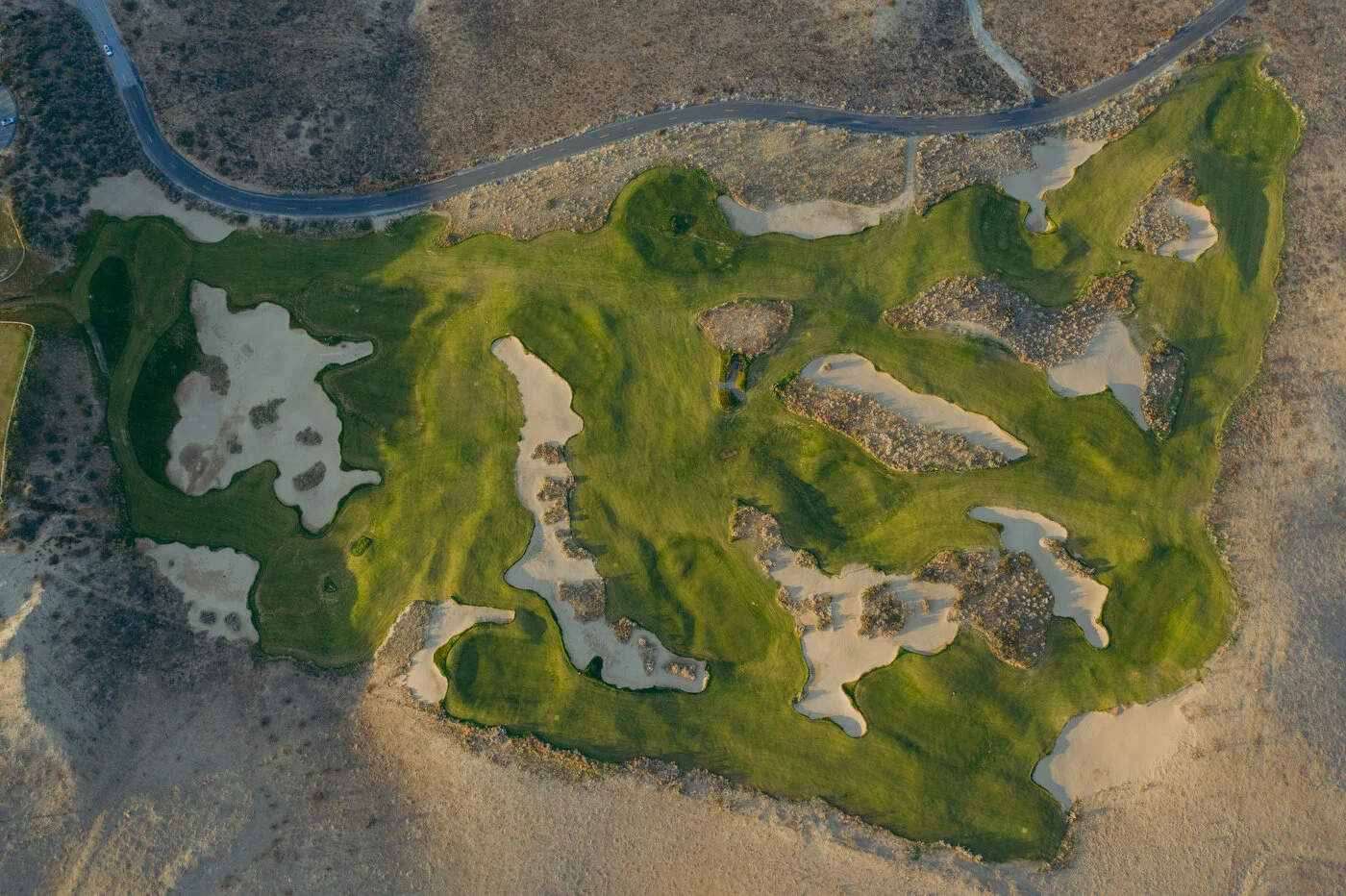





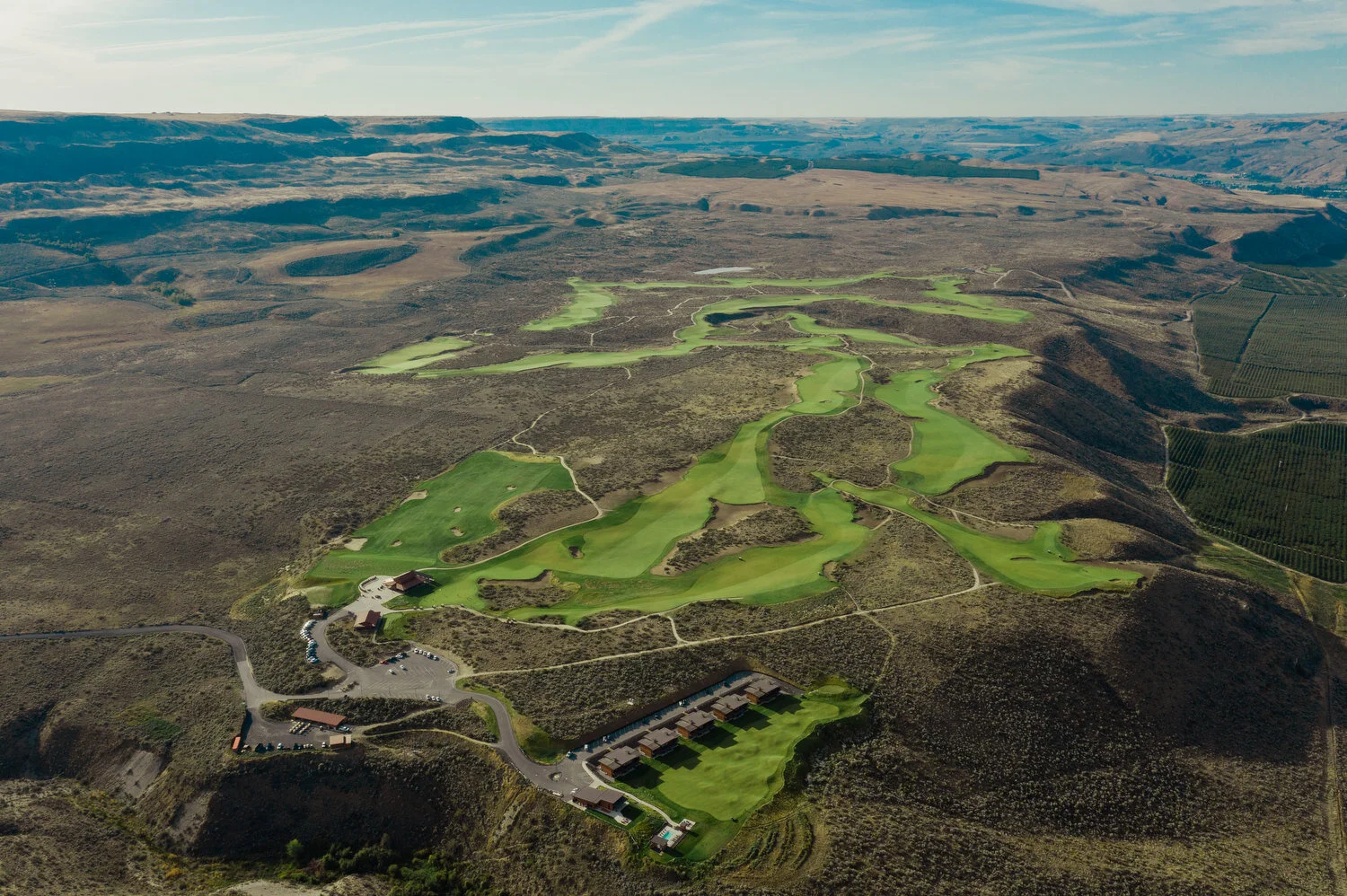



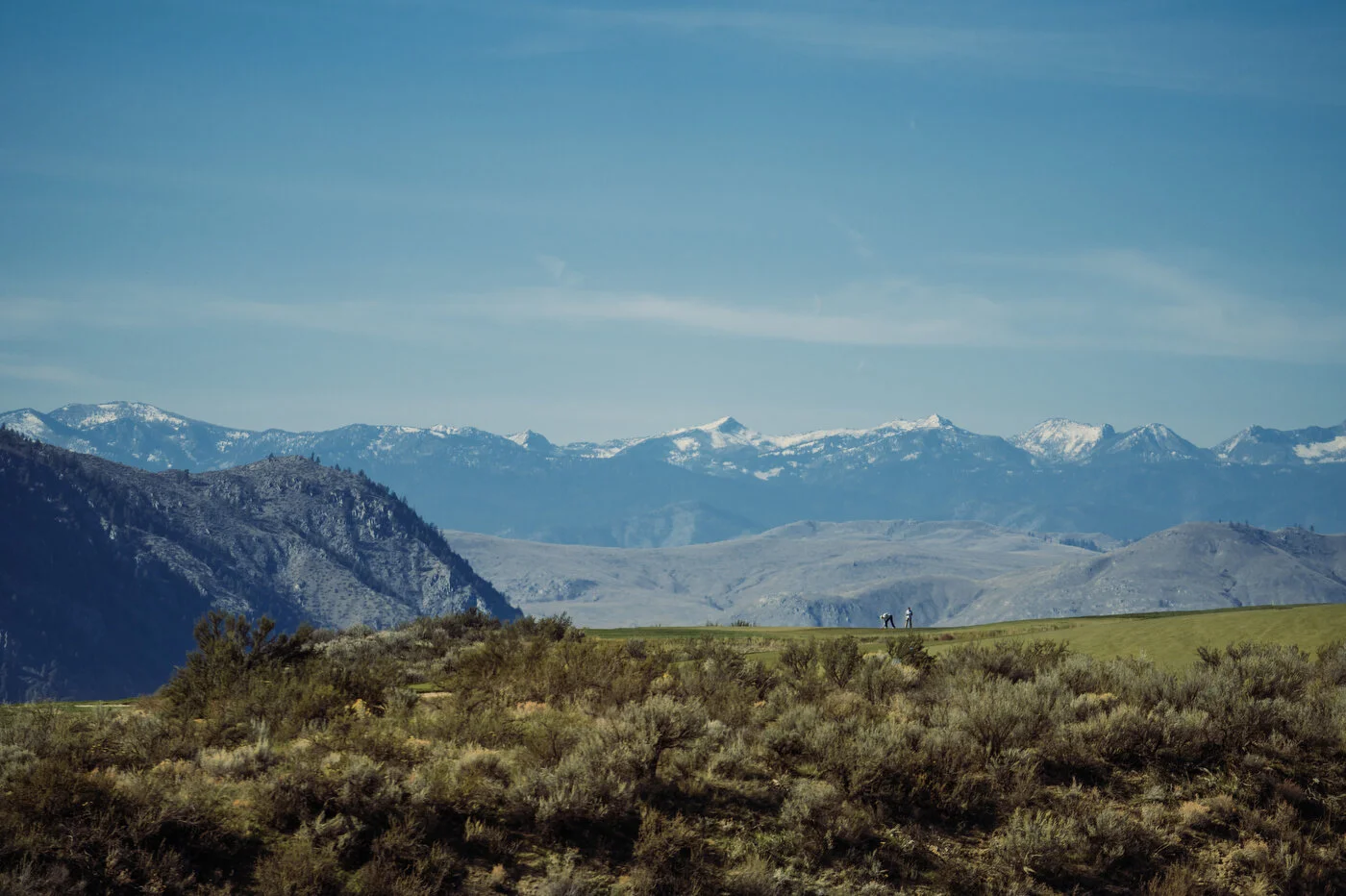
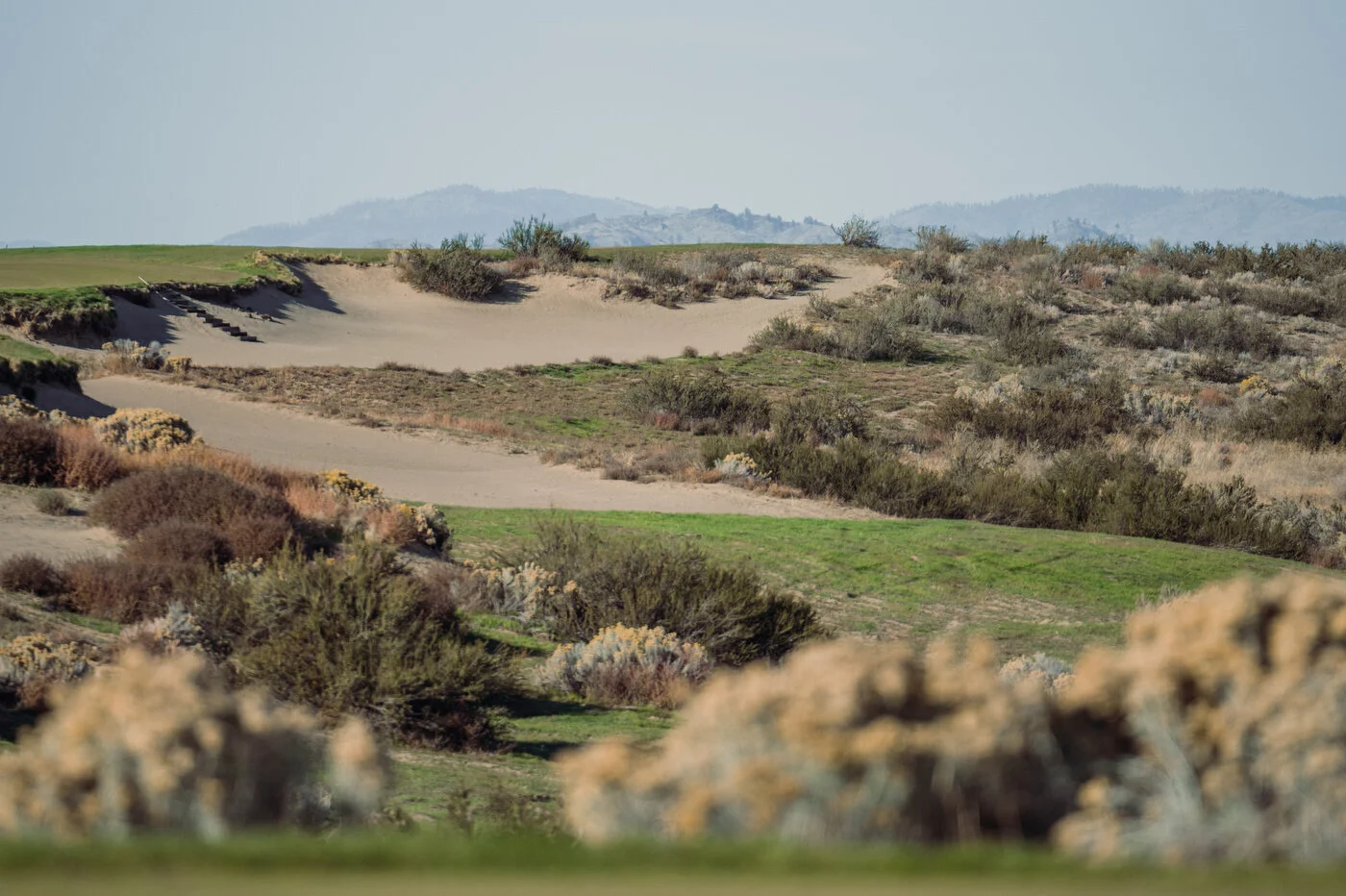

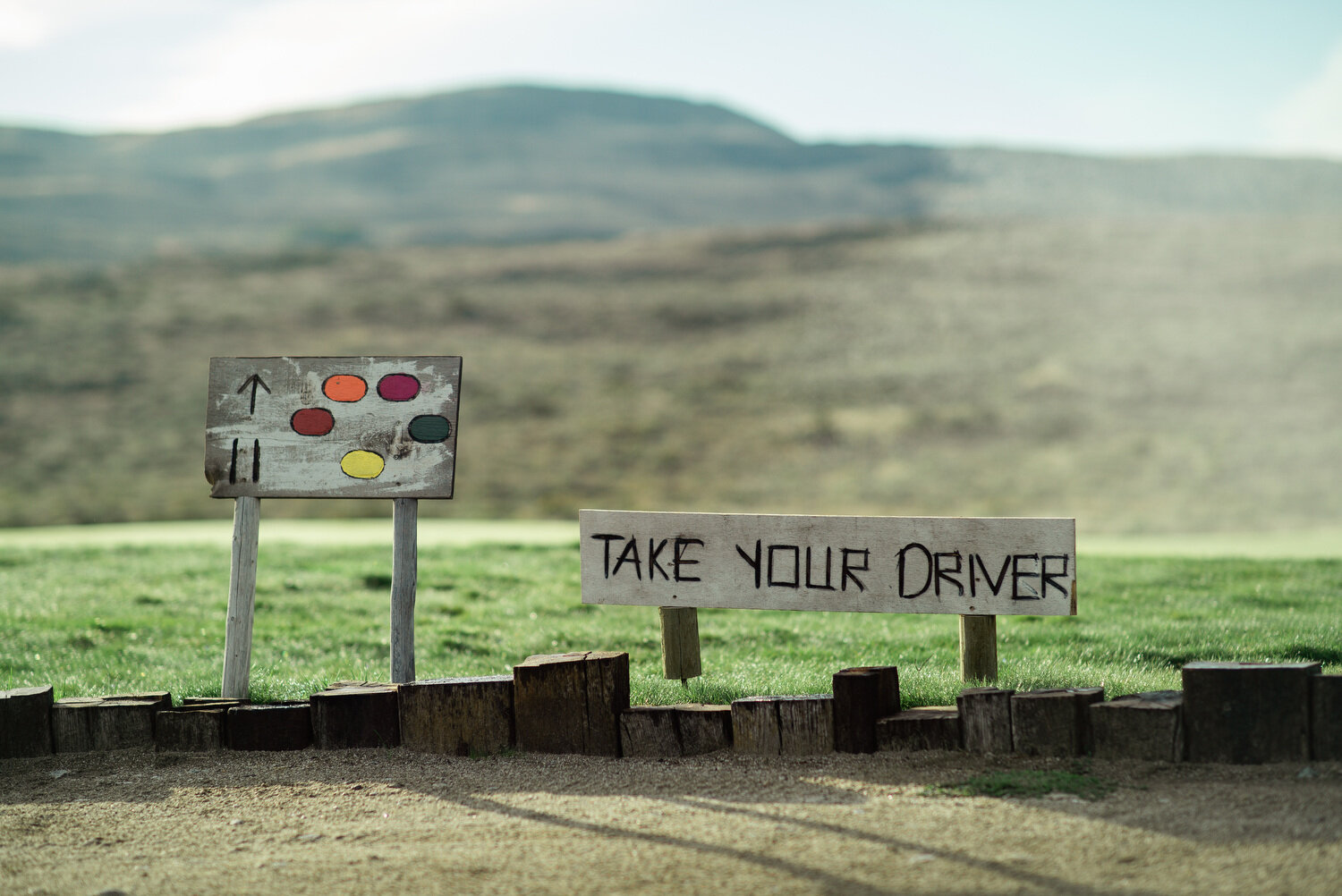


































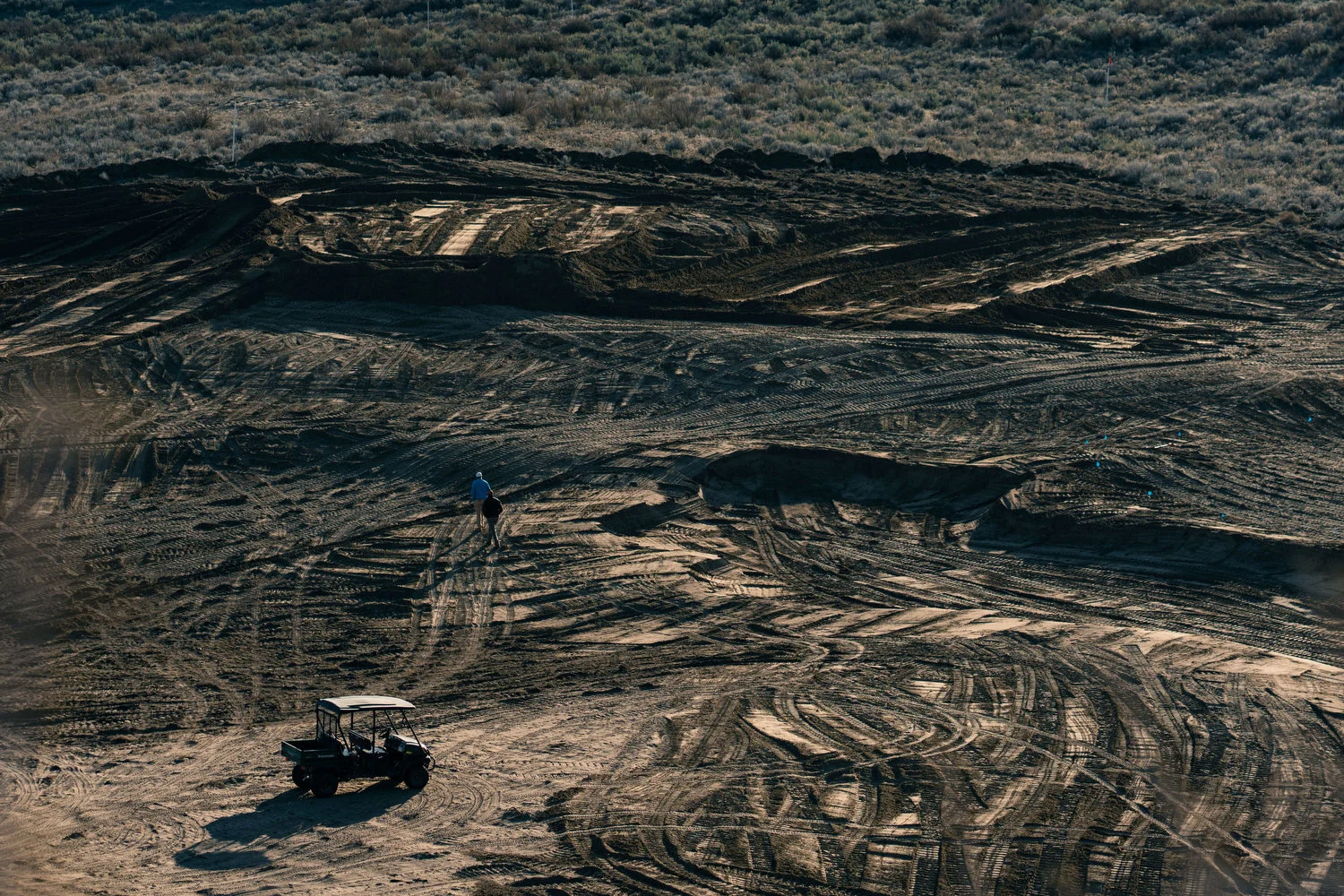












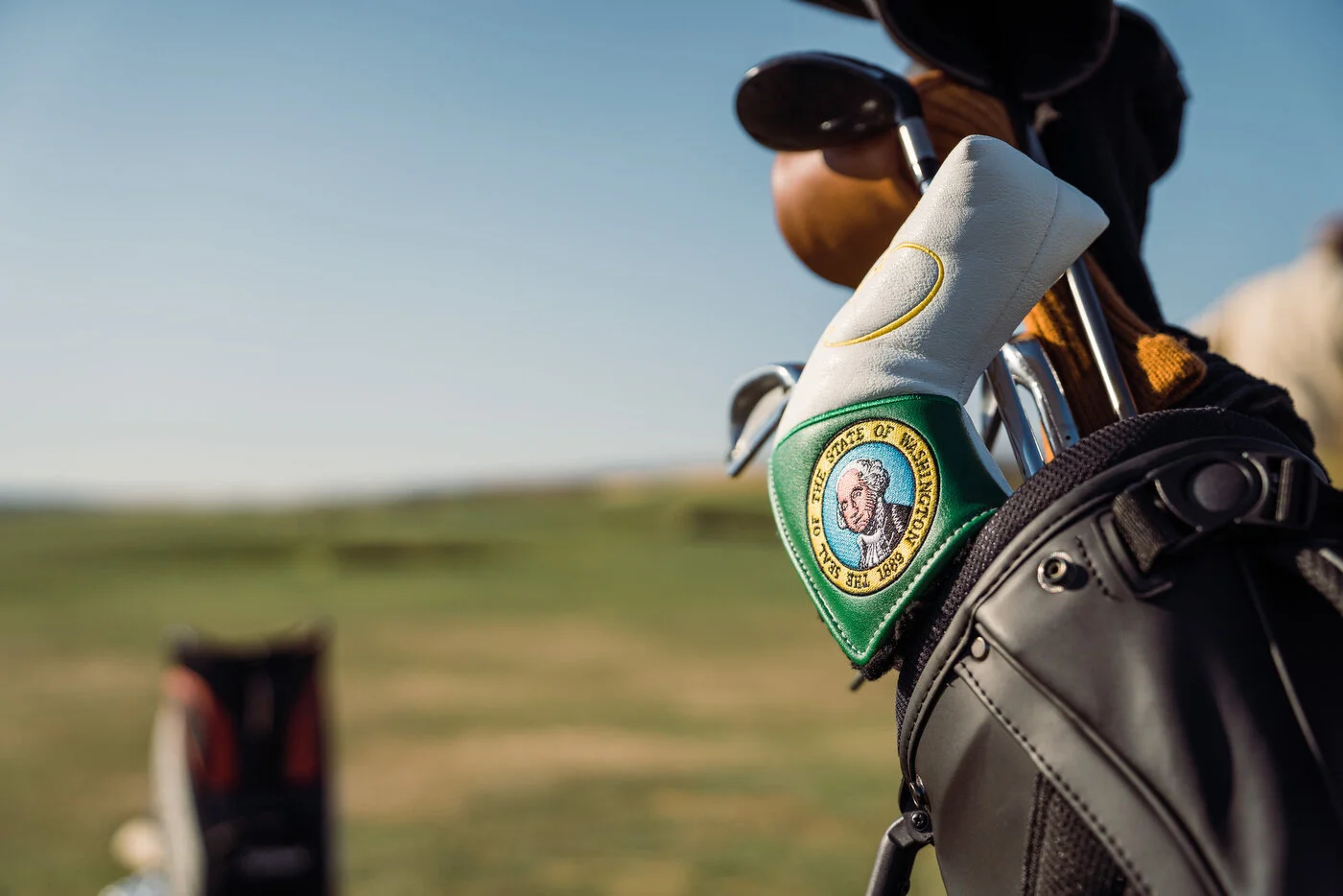

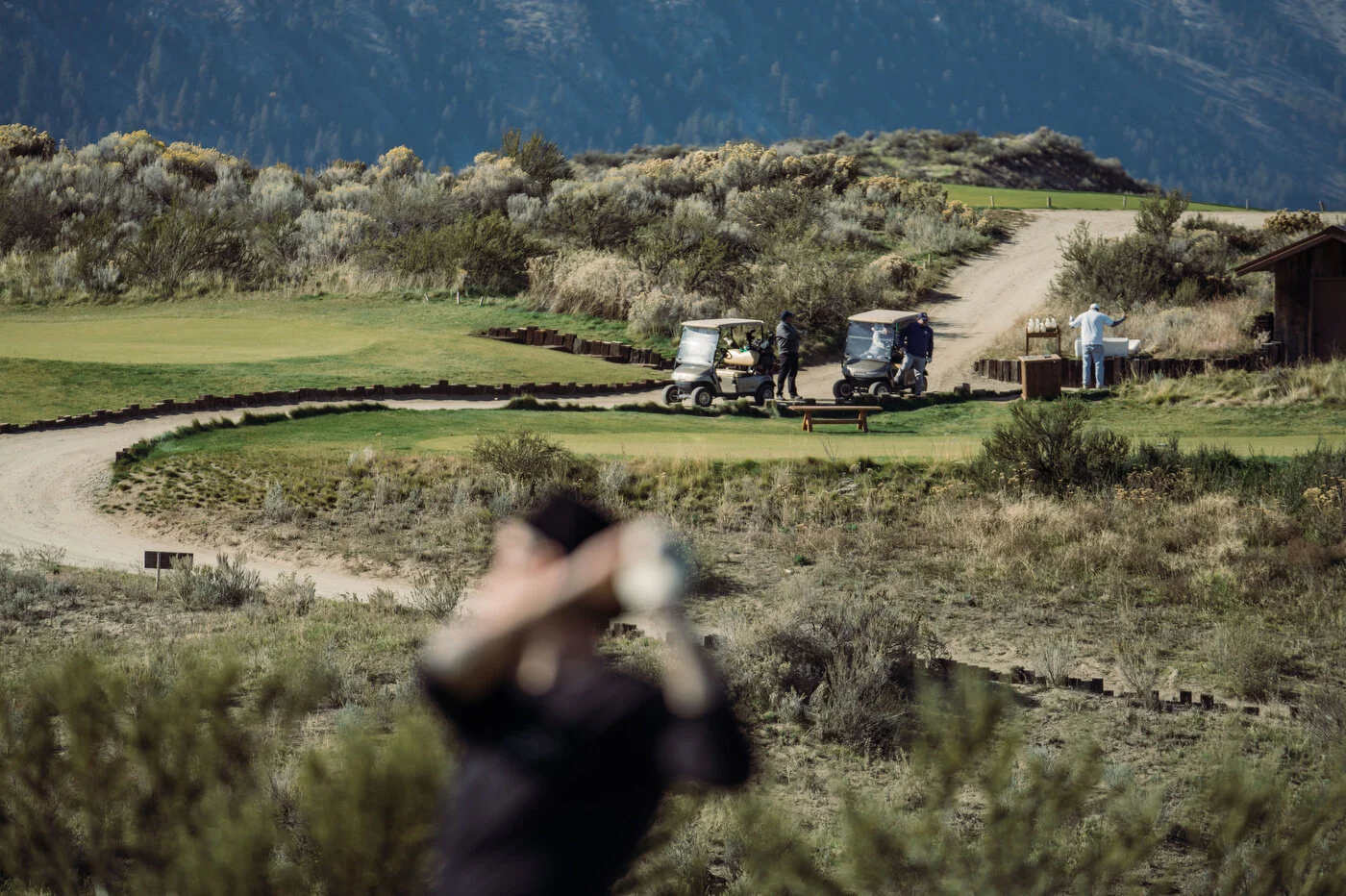

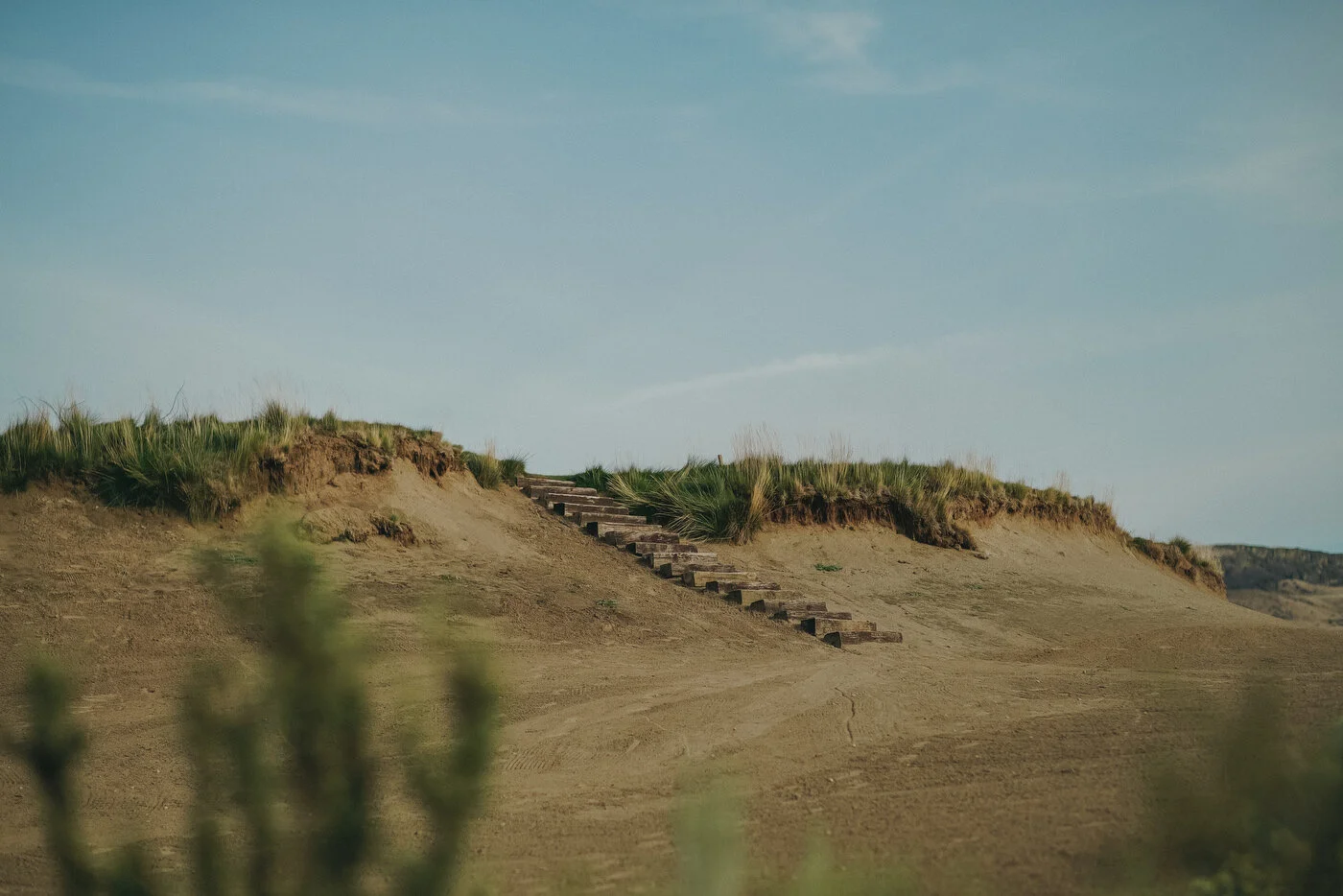






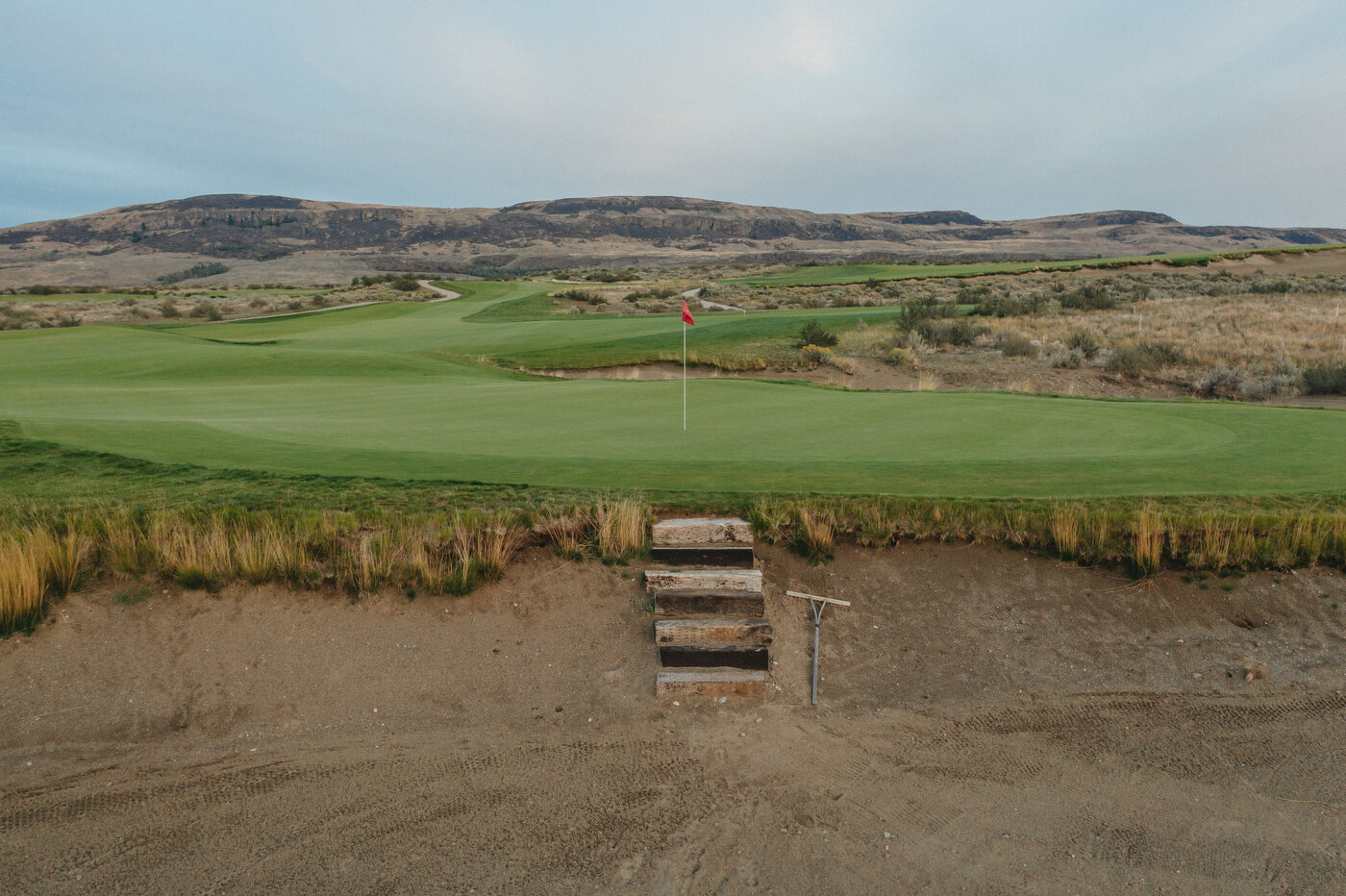






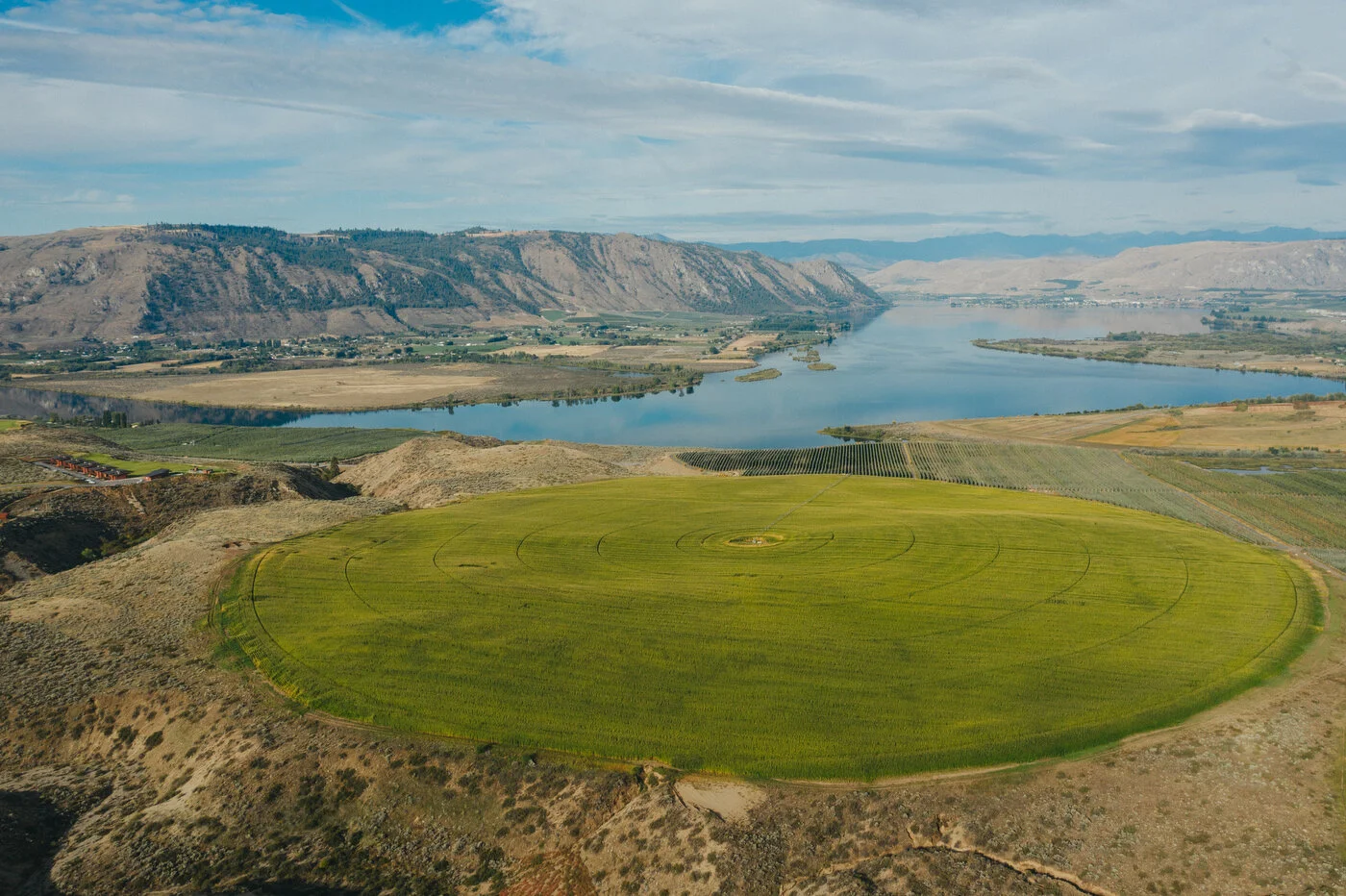



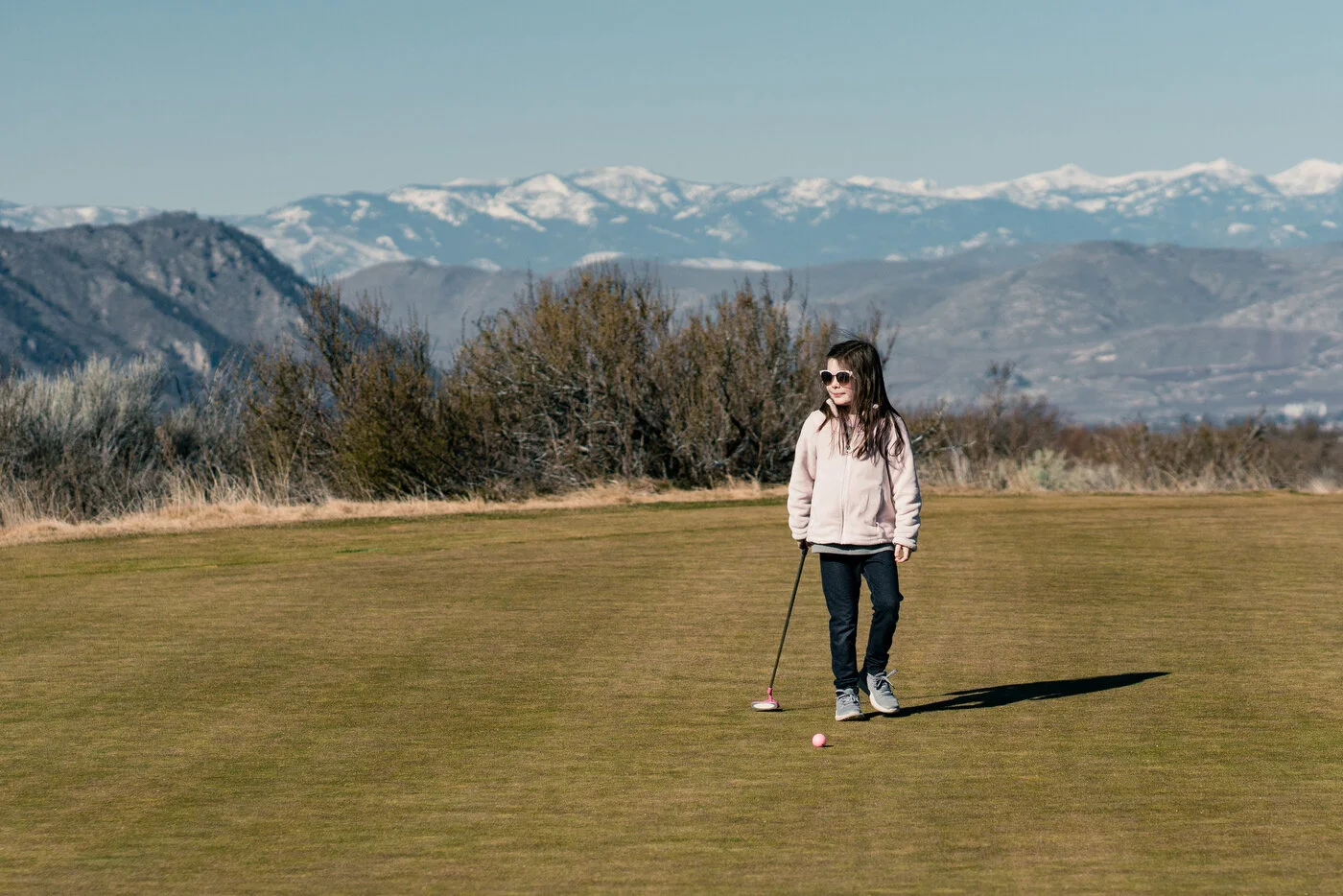




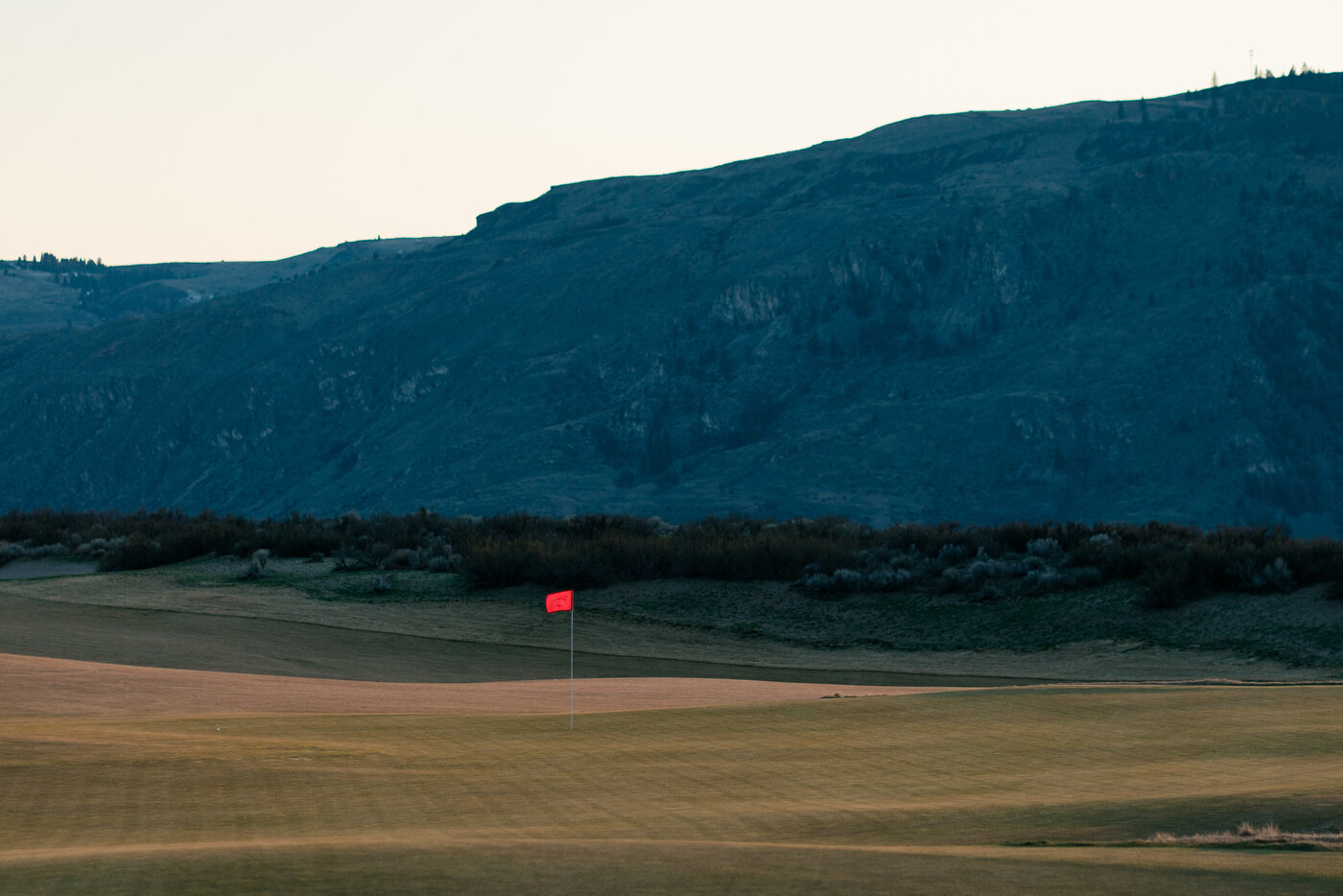

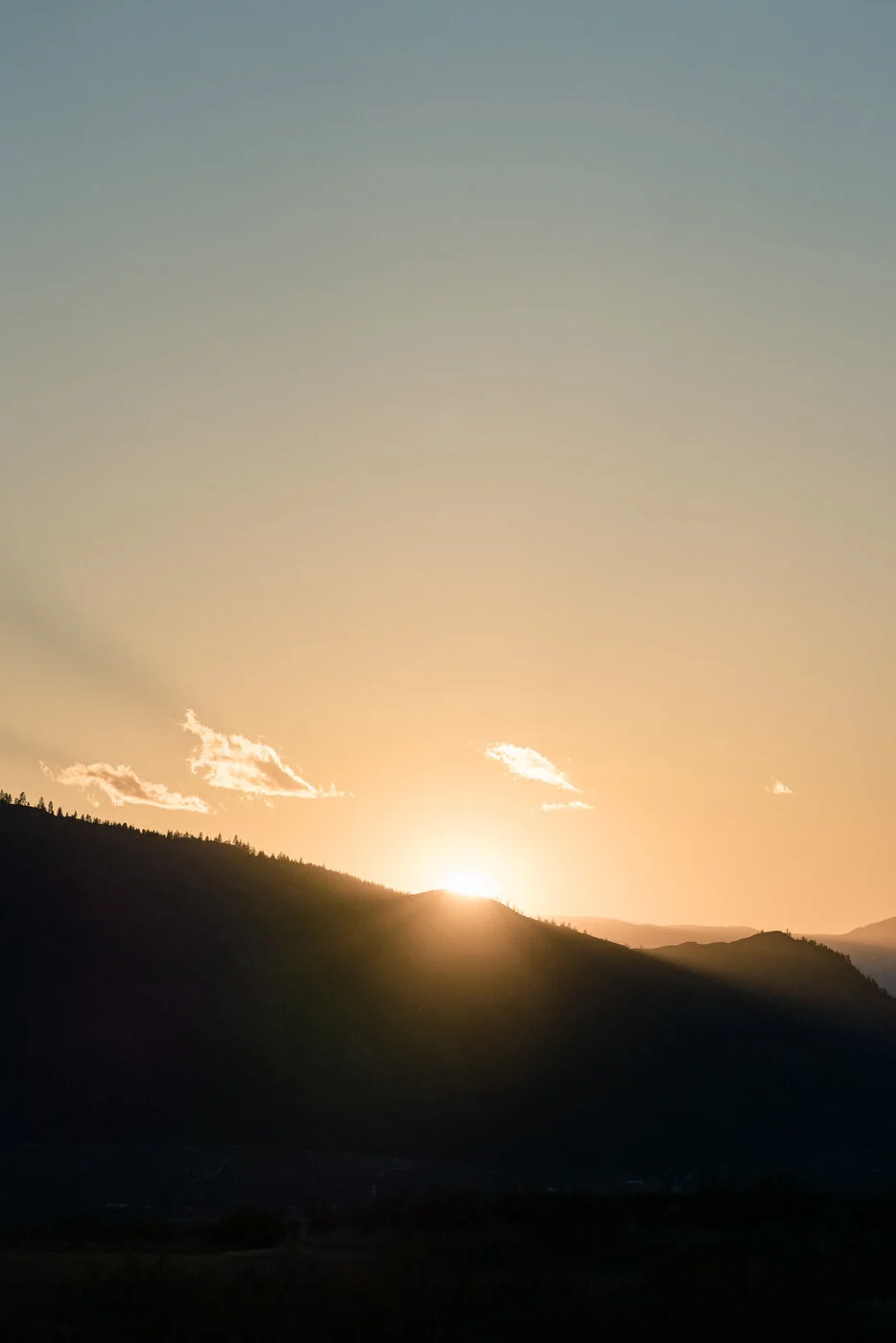













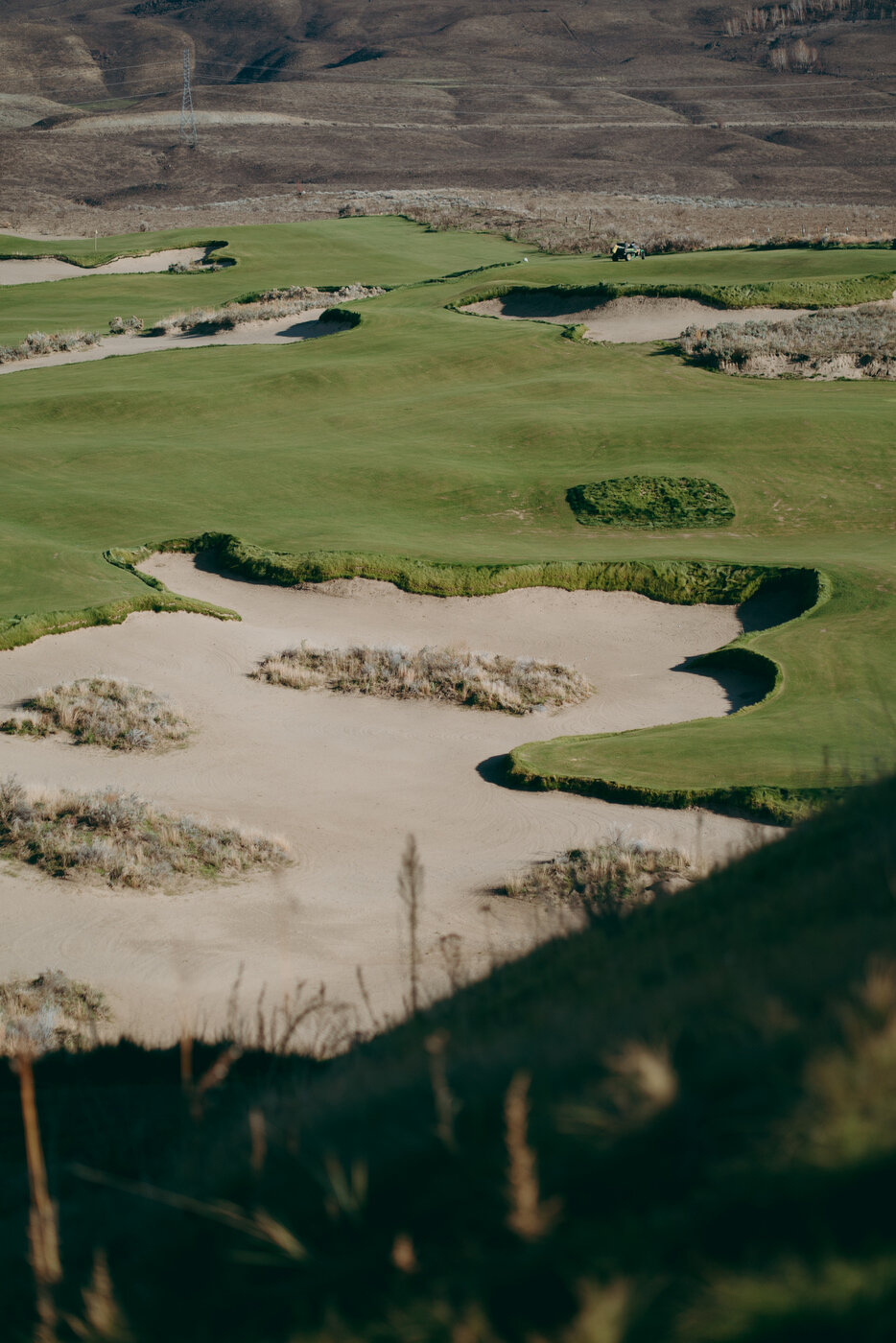


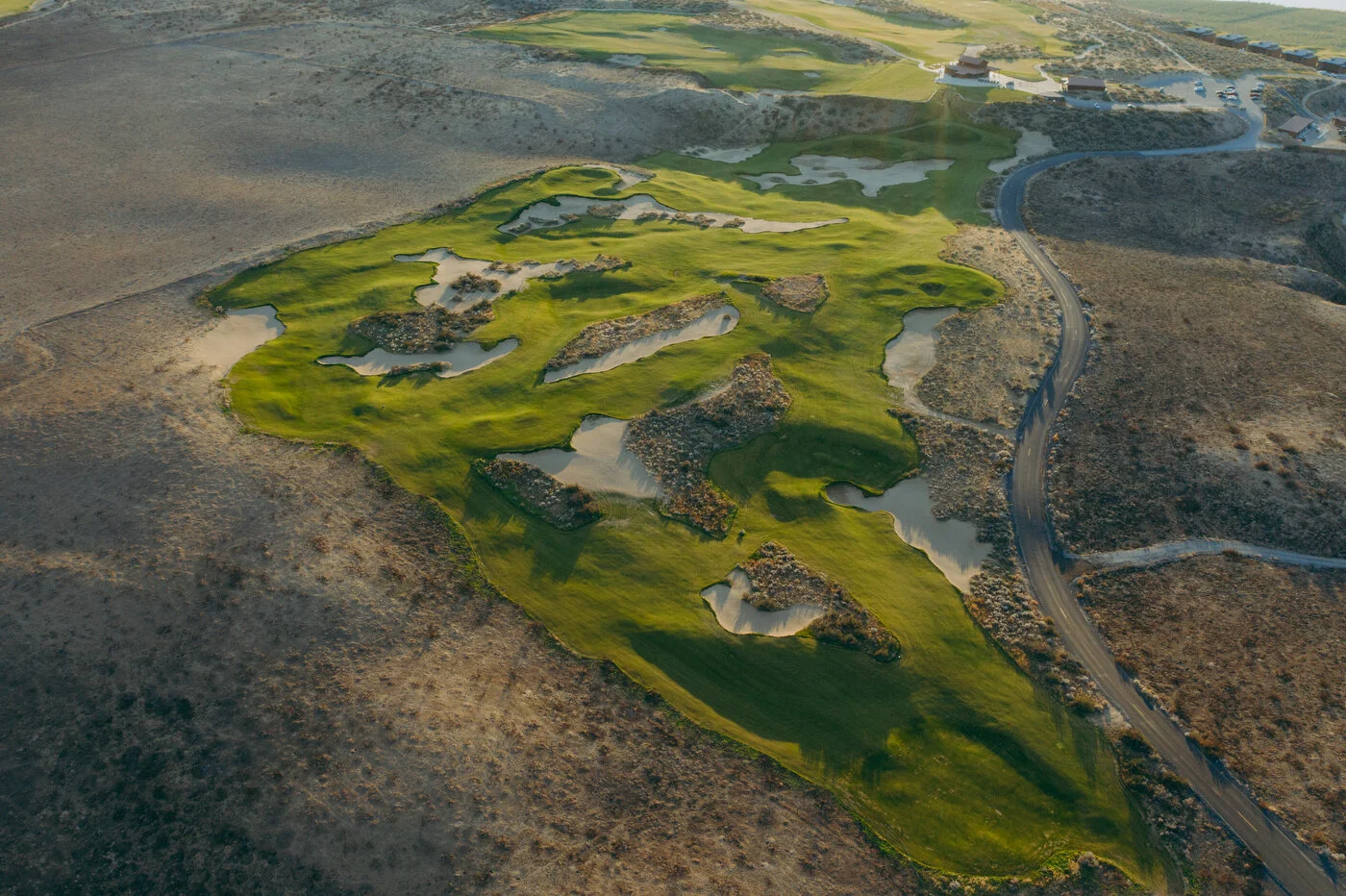


















































































































Jason Moore What was the beginning of the Gamble Sands project?
Tory Wulf Well, the market lost fourteen hundred points on one of the first days we were out here scheming. We were like, ‘What’s going on?’ So right after that. Yeah, right after that, we just had a change in philosophy. And this was always on our minds, this property. It was just here. We thought, that can be the second course (points north of where were standing – just off the current 18th at Gamble Sands). We can take people over there for a private experience from this, but it evolved into: what can withstand the test of time, what is good enough to stand on its own if we just put it there and had to run a golf course and tried to break even?
My brother brought over Warren Vincent, the founder of OB Sports. He was shocked. “I didn’t realize this kind of land existed around here.” And I said, well, it’s just cattle pasture that isn’t that good. And the sand dunes were here. We knew it all went together, knowing the Bandon story and knowing the links or, you know, we thought we had a pretty good piece here. Yeah. So we changed gears totally and engaged a couple architects. The property behind us over here, the corn circles – that was the first property that we looked at along with this current property that the course is on now. They get separated with two different washes that come off the hill. And Coore and Crenshaw and David all came out. They just happened to come out on the same day, which was a really cool experience. Got to stand here listen to Bill Coore and David Kidd talking about the property. We eventually went with David for a couple of different reasons, but mainly, he was local. His Bandon ties were great. We got along great. It just evolved from there. And we just we just kept going.
JM So what’s the conversation like when you have Bill Coore and Dave McClay Kidd walking the property? Are they seeing the same things? Are they seeing different features?
TW They both have an unbelievable eye for what they see in 3-D. You and I may look at that piece of ground and say, “that’s pretty cool”. But they actually see a golf hole. They can see what they can do with it. Most designers are gonna go out and find green green sites and then route them back and forth. But they said, “There’s so many green sites out here you don’t know what to do with all of them. You just start picking all the best ones and then seeing how the puzzle fits.
JM What is that process like working with DMK? It obviously is going to be different than working with Robert Trent Jones II or whoever is doing a project like this. Did he find where he wanted to start and just start routing?
TW The first thing is you get a topo aerial of the property. GPS, helicopters, drones. Figure out how you are going to get into the property. Where’s the water coming from? What are the wind directions? We need to know all the different variables present that play into it over the lifetime of the golf course. It’s exploratory research. And then you go out and you officially decide that this is where we want to do it. Then you find where your clubhouse will go and then you find all the best holes. My brother-in-law Cash simply said “you go find the best holes and we’ll figure out how to work; make it work. And you have fourteen hundred acres to work with. You go find the eighteen best golf holes and keep a little bit of the future in mind. But for the first course, find the best golf. We don’t care what it takes. We don’t have any real estate to worry about here. We don’t have a developer going, “OK – our roads are gone through here and you have this much to work with.” We had every inch of this place to work with. I think that really intrigued David. He’s thinking, “I’ve got a guy that just said to go build the best golf course I can. I don’t have any excuses.” I think it makes him a little bit nervous haha. But man, they did an unbelievable job.
JM So approximately how many acres was he working?
TW Roughly about nine hundred acres. And about three or four hundred on the other side of the wash to the north. Most guys say give me two hundred and that’s fine.
JM Does that give us hope that there could be six more courses out here?
TW I don’t know about six haha. I know we have one routed and we have a good plan on where to go with that. It’s just timing. We’re still very young in our process. But we have a par three that we’re actually moving dirt on now. It’s 12 holes of fun, hit it and watch the ball end up where you want it to. Some forced carries. The Greens are going to be a little bit more undulating and challenging. For groups that get in at 5 or 6pm, they have a couple hours to burn before they want to eat dinner. We don’t have nine to offer as the current course is a true out-and-back layout. And we want people to experience the whole thing. So we want something that can be quick. But people want something that can be quick, hence the name Quicksands. You can go out and play 12 holes. Come back. Shower up. Get to dinner. If you have a noon tee time on the full course, then jump out early on the par 3 to warm up.
JM What is your role out here? Are you part of the family? Were you part of the project at the outset?
TW I’m the project manager of all the projects related to Gamble Sands. I’m related to the Gebbers family through my brother-in-law, Cass Gebbers. Him and his sister, Jody gabbers Crane were the people that really enabled this project to keep gone. I was the guy on the ground pushing it – made all the connections in the golf business, dealt with the older management company OB Sports, and this basically just kind of my baby. And now people are out here taking debits out of her.
JM Well, you have a beautiful baby. What is the name all about?
TW The name Gamble – it’s not based on a game of chance or that we were gambling on this project. It’s just happened to be a coincidence. Dan Gamble walked out here from Nova Scotia in the 1890s looking for gold, and ended up settling here later on. His daughter ended up marrying John Gebbers. So the Gambles became part of the Gebbers family. Martha Gamble was a very strong lady who ran the Gebbers family companies through the depression. She kept it going. She never filed for any type of bankruptcy during the depression – she wrote her own script. So the ode to the Gamble name is where we wanted to do it. And the Gamble script on our logo was her original signature that she signed on all of her bank checks. And the bunny logo – there’s a ton of bunnies out here. My nephew, Clay Gebbers, ended up drawing that while down in Arizona. They’re still Gambles in town. One works here on the property.
In general, you know, when we’re thinking about this golf course, we still felt that Northwest Golf was fairly undeveloped. You know, there wasn’t a ton of golf in our region that people wanted to travel to. We just had a bunch of smaller golf courses that fit our desire to play golf. And when Chambers happened – that was a big boost. Bandon was already there. Wine Valley in Walla Walla was under under-construction. We felt that the Northwest vibe for golf could really grow. And now if you look at National rankings, there’s quite a few Northwest features, and I still think there’s room to grow in the Northwest, especially with links golf. Nobody’s building average golf anymore. The average golf course is around a 200 home development. They’re just gonna build it to give it to the homeowners. But really good golf, like what we desired to build here, is what’s going to keep growing the game of golf.
People will travel for good golf. Look behind you on the driving range. People drive three and a half hours. You guys didn’t drive out here three and half hours for an average golf course. So if we keep building good golf and keep having fun with the right thing in mind, which is, people having fun and growing the game of golf, we will keep getting there. People understand that if you have good golf, you have to pay for it. If you want to have good conditions, you need to have a place to do it. And have good service and provide a great time. You do have to pay for it. There are other places to go play golf to just go whack it around. And those are there for a reason. And I love them, too. Great golf in the northwest is something that we really took to heart.
JM How did this layout become a true out-and-back, which is very traditional, but not common stateside?
TW David’s goal was to really to include the experience of getting here and playing. You’re gonna be driving through apple orchards and cornfields and going, ‘where in the heck am I going?’ Most of the folks that are coming over here don’t live in this atmosphere every day. Early on, we had people at the top of that mound stop and think, ‘where the hell am I going?’ GPS wasn’t working at that time. Google didn’t recognize who we were. So the biggest thing for us was to just build the best golf course we can. And then we will figure out how it works. Originally, we had the clubhouse rooted right in the middle of the golf course. And we were gonna go around and come in the back. But this site was just so good looking. Looking down the river, we knew where the end was gonna eventually end up. It just felt like this was the hub. And we want to grow into the north. David was a big proponent of not having returning nines. Golf is meant to be a loop. And now we have a 7.3 mile walk. And it’s not that hard of a walk. I’ve walked other golf courses around here that are shorter and I end up completely exhausted. Especially if we’re not in your shoes haha.
JM I’m guessing you’re getting a lot of play from people coming from all over the world, or at least all over the country. Do you get a lot of folks that are out here four or five times a week or is it mostly that destination-type crowd?
TW Most of our guests are destination golfers. They’re coming from three and four hours away. They come in to play a couple rounds, stay the night. Once we added The Inn, our lodging experience, it changed the dynamic of what this place was. You can wake up here and walk up the hill and play golf. Before, you had to wake up and drive from wherever you were coming from. And staying 30 minutes away was even a challenge in the high season because the accommodations just weren’t there. We’re getting a few people from around the country, around the world. Very intermittently. But we’re definitely a regional destination for the northwest right now.
JM It’s obviously a remote location. It’s not like it’s been here for 50 years. I think we’re going to start seeing this big influx of the world traveller who sees this as a destination course. The legend is out that this is the funnest golf course you could ever play. Tell us how that was part of your philosophy and if people really resonate with that. Am I the only one, or do people think this is just good fun?
TW My wife and I came for dinner the other night and we’re walking across the parking lot and this gal walks up to her and just gives her a big hug. And she said, “I just shot my best score I have ever had by 10 strokes! This is the best place to play, ever”. That’s surreal for me. Walking around here in the sagebrush and having all the naysayers say, “there’s no one that will come out and play this golf course. You won’t make enough to pay the bills.” And a lot of times, I believed that. But watching people come here and have so much fun and then returning again – David always said, “a one-off golf course is when they’ll come one time and play. But you truly have something that they’re going to come back multiple times and play.” And we have people that come back three and four times a year from the west side and continue to have fun.
JM This is obviously a links style course. Some people would say links golf is ‘where the ocean meets the land’. But what makes this a links property?
TW You can truly play the ground game on every single hole there’s out there. There’s one hole where we have a forced carry. But you could play this golf course with a five wood, seven iron and a putter all day long. Links golf is defined by a sandy surface connected with the ocean. David, Warren, all the guys that we all trusted in this process said, “you can have a links golf course anywhere you want. It just makes it better that you’re looking at water on this site. Links just happened to be in Scotland where it was right against the ocean where it was sandy. All of our turf connects. We tell people in the clubhouse, “don’t worry about the signs – just follow the turf. No need to look for a path. The greens feed right into the tees. I think if you wanted to find true links, it’s playing a ground game on tight turf with the sandy environment.
JM You can play such a variety of shots in a huge fire. In my opinion, is it turf conditions are so consistent? The greens are the same firmness as the fairways. You can work balls in 10 different ways. Here on 18, I can think of six different ways to play in and end up somewhere near the pin.
TW Most guys, when they build the golf course, they have to go in and tear everything out, bring in different soils and amend it and try to keep the integrity of the same soil. We have the same soil across this entire bluff. If you’re looking at what we’re looking at right here at 18 green complex – we didn’t bring in one ounce of extra soil. That bunker (off the left and rear sides of the green) was actually sitting right there. The green was simply shaped. The bunker over there was dug. But everything else was just shaped. From a construction standpoint, it was as simple as a build that you could ever find. Most golf courses, you’d have to dig that out. Bring in different types of soils for the green, different irrigation patterns. Our irrigation system is called “grid” irrigation. We don’t have surrounds on all of our greens. We don’t have to get the green differently than everything else. We just irrigate everything at once. So that gives us the freedom to change grass cuts whenever we want. We can just change our mind. When we originally opened, everything was tight. But now we are spreading things out more. It makes it easier for the golfer and finding your ball. We’re on 114 acres. I just played an awesome golf course down in Arizona last week. Troon North, which is on 90 acres. And you can definitely tell the difference. It’s a lot harder. There’s just less turf to play with.
JM You look at some of these fairways and you have a place to aim it. And if you miss it by 10 yards, you’re nervous. Then you get after the ball and realize “Yeah, I still got a shot.” And I think golf should be more fun like that.
TW Yeah, fun in that you have you’re not as nervous on the tee. You have more freedom to swing. You know that you have way more margin for error. But scoring is just as difficult on an easy golf course as it is on a hard golf course. You’re just in more trouble on a harder golf course.
JM I’m assuming you’re from here? What do you think that Gamble Sands means for Pacific Northwest Golf?
TW I grew up an hour south here in Wenatchee. The only golf that we knew growing up was “Parkland” golf, you know, old country club, tree-lined golf down in the river valley. Nobody really knew about links golf around the Northwest until Bandon Dunes. And if you’re a golfer and were lucky enough to make that trek, you could understand it a little bit. Our biggest thing for links around here is making the change in the way they play. To quit thinking about a 60 degree wedge when you’re 30 feet off the green from here right now and hit a seven iron all day long out of that lie to that pin and quit thinking about hitting it thirty feet in the air and dropping it and letting it bounce up. You learn how the contours roll. It’s just modifying the putt. The ground game. Understanding that it’s an art, too. It’s not something everybody comes prepared to experience. But from my personal experience, people that experience links golf the first round or two to start to get it. It’s not like it’s an impossible thing to learn. You just start catching on.
The best part about links golf for Northwest folks is once they play it, they love it. They want to go right back out and try the things that they thought that they should’ve done the first time. And then they continue to build on that and have fun.
JM Describe the surrounding area out here. This is obviously a really cool setting. Just this property alone. We are close to land wineries. The weather is unique, and seemingly always perfect. What do people experience when they come here? Do they stay here, or also go out on the town or go out to wineries or lakes?
TW The surrounding activities are quite bountiful. If you’re a fisherman, if you’re hunter. Or a weekend wine wine taster. There’s a lot to do around here. Lake Chelan is 30 minutes door to door from here. And there’s I don’t know how many wineries just a short drive out. Lake Chelan offers boating, water sports, shopping and sightseeing. Winthrop is a 50 mile drive from here. It’s a cowboy-themed town up in the North Cascades. It’s a beautiful place to go up and experience. We have the Columbia River that sits right below Gamble Sands, which has world-class fishing and boating and watersports. There’s a lot of stuff to do around here. Biking is a big one, too. I like to road-bike. I could bring my road bike to ride in the morning, play golf in the afternoon.
We find a lot of people that say, “hey, we’re gonna go fishing. But we actually ended up playing another round of golf.” They are already trying to figure out how to sneak in a second 18 tomorrow. Literally wanting to play 72 holes and calling the wife to ask, “Can I be here another day?”
JM What is with all the signs on the road leading to Gamble Sands?
TW Well, people get lost. The first year we were open, the road wasn’t paved. We had a guy drive up here in a Maserati over a gravel road. We worked hard to get our road paved, but people kind of were lost. A lot of people were getting about a mile up the road and thinking, man, I’m in the middle of an apple orchard. Where am I going? Instead of just following the road. So we came up with the concept of giving them the breadcrumbs of signage along the way. But again, going back to what we really wanted to achieve was we wanted people to discover things coming out.
JM The first time I came out here, I was just blown away by this landscape. I never played links golf in this type of setting. Most people obviously never have. But I walked away thinking, this feels like I’m playing golf on the moon. It’s like a lunar landscape. Everything kind of rolls. You’re seeing like this crazy terrain. What’s the best description you’ve heard of this landscape and setting? Do people describe it in unique ways or are they freaked out when they see it?
TW They just describe it having a lot of sand. They recognize that there’s way more movement out here than what you would expect by coming out and looking at the first hole here. But you don’t feel it in your legs when you’re playing it. Everything is very gentle getting to where you’re going. The one cue that we gave David when we built the golf course was we don’t want to make anything manufactured. We don’t want to see cat tracks and ruin the landscape and then have to go back and patch things up. We want to have the golf course just float down and land on the ground. I could go hole by hole and tell you that we did very little shaping. We dug bunkers and we shaped the green and we built the tees. But that is pretty much it. And they did an unbelievable job of not creating too much. They just took what the land had to offer, and David built on it. I’m having fun. I remember him coming back from England on a trip and saying, “we’re gonna redo the way we do our tees. Everything is going to fit together. We’re gonna be big and bold and that’s how we’re gonna do it.” And we really discovered that thought process on the second hole, which has become our signature hole. People come out and they enjoy not getting beat up. They want to walk on turf. The turf conditions out here are as good as it gets. David’s dad Jimmy is a Greens keeper, and works and sees all the best courses in the UK. And he says this is some of the best turf conditions that he’s ever been around.
Our original superintendent, Chip Caswell, and now our superintendent, Josh Truman, who was here as one of our original guys on the ground, have everything to do with that. And I think that’s a lot what keeps you people coming back. They don’t have to play with bad turf conditions. They know what they’re gonna get. Having the same soil typology across the whole place and the 300 days of sun, a little bit of rain and just great days to play. I think that is what keeps people coming back.